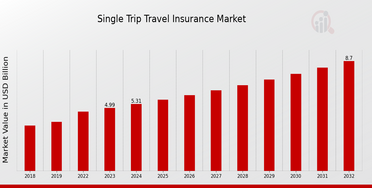Find the Right Business Insurance for Your Company
Find the Right Business Insurance for Your Company
In the dynamic landscape of business, securing the right insurance is a critical first step in safeguarding a companys interests and operations. Every business faces an array of risks, ranging from property damage to legal liabilities, underscoring the necessity of a well-structured insurance strategy. By evaluating various types of coverage, businesses can tailor their protection to meet specific needs and address potential vulnerabilities. Understanding the different forms of insurance—including general liability, property, and workers compensation—becomes paramount as companies navigate challenges and uncertainties. Moreover, as illustrates, effective risk management techniques such as avoidance, mitigation, acceptance, and transference play a vital role in determining the appropriate insurance solutions. Ultimately, finding the right business insurance not only protects assets but also provides peace of mind, enabling organizations to thrive in an increasingly complex environment, as supported by insights from (Franklin K) and (Gantwerk H et al.).

A. Importance of Business Insurance in Risk Management
In todays volatile business environment, the importance of business insurance as a critical component of risk management cannot be overstated. Insurance serves as a safety net that protects companies from unforeseen perils, ranging from natural disasters to litigation. By effectively managing these risks, businesses not only safeguard their assets but also ensure operational continuity, which is vital for maintaining stakeholder trust and confidence. Furthermore, as highlighted by the Chilean private sectors challenges, companies must authentically connect their insurance strategies to broader social responsibilities to mitigate growing public mistrust ((Grindle AK et al.)). By doing so, businesses can create a shared value that benefits both the organization and society, enhancing their reputation and competitive edge. Additionally, industry observations emphasize that without adequate insurance coverage, approximately 53% of businesses may fail within their first four years due to insufficient risk management ((Webb P et al.)). Thus, choosing the right business insurance is pivotal for long-term success.
II. Types of Business Insurance
A comprehensive understanding of business insurance requires an examination of its various types and their significance in mitigating potential risks. Among these, general liability insurance serves as a foundational policy for businesses, protecting against claims of bodily injury, property damage, and personal injury. Similarly, property insurance covers physical assets, safeguarding against damages resulting from theft, fire, or natural disasters. Moreover, specialized policies such as professional liability insurance serve specific industries by covering negligence claims against professionals, which is fundamental in sectors like healthcare and law. Additionally, employee-related insurances, including workers’ compensation and unemployment insurance, support both the workforce and the organization’s financial stability. To illustrate these varying aspects of risk management, one can reference , which visually outlines the techniques of Avoidance, Mitigation, Acceptance, and Transference within the context of business strategies. Careful selection of the right insurance types is pivotal for sustainable business growth, as highlighted in studies addressing financial management strategies (Department CA), (Association SL).
A. Overview of Common Insurance Policies (e.g., General Liability, Property, Workers’ Compensation)
Navigating the various types of insurance policies is crucial for any business seeking to mitigate risks and safeguard assets. Among the most commonly encountered are General Liability, Property, and Workers Compensation policies. General Liability insurance protects businesses from claims involving bodily injuries, property damage, and personal injury, providing essential coverage in todays litigious environment. Property insurance, on the other hand, secures a companys physical assets against risks such as fire, theft, and natural disasters, ensuring financial stability in the face of unexpected events. Workers Compensation insurance is mandated in many jurisdictions, covering medical expenses and lost wages for employees injured on the job, thereby promoting a safe workplace and minimizing legal repercussions. Together, these policies form a foundation for comprehensive risk management, illustrating the complex dynamics of the insurance industry as outlined in (Barth et al.) and (J Cummins D et al.). For a visual representation of these insurance categories and their significance.
| Policy Type | Coverage | Typical Annual Premium | Recommended For |
| General Liability | Third-party bodily injury and property damage | $500 – $1,500 | Most businesses |
| Property Insurance | Business property and equipment | $1,000 – $3,000 | Businesses with physical assets |
| Workers’ Compensation | Employee injuries and illnesses | $2,000 – $5,000 | Businesses with employees |
| Professional Liability | Errors and omissions in professional services | $1,000 – $3,000 | Service-based businesses |
| Cyber Liability | Data breaches and cyber attacks | $1,500 – $4,000 | Businesses handling sensitive data |
III. Factors to Consider When Choosing Insurance
When selecting insurance for a business, several critical factors must be taken into account to ensure appropriate coverage and financial security. An essential consideration is the insurers financial stability, as it directly influences the likelihood of timely claims processing and payout; a companys fiduciary responsibility in this regard is paramount, as highlighted in studies which indicate that clients prioritize the reliability of insurers to compensate damages when they occur (Domazet et al.). Additionally, understanding the specific types of coverage needed based on industry-related risks is crucial. For instance, visual risk management strategies, such as those outlined in , can provide clarity on how insurance products can mitigate various vulnerabilities. Ultimately, a well-rounded approach involves evaluating both the financial health of the insurance providers and the specific needs of the business, ensuring that the chosen policy effectively aligns with organizational goals and risk exposures.
A. Assessing Your Business Needs and Risks
In assessing business needs and risks, it is crucial to adopt a comprehensive approach that informs effective insurance decisions. Companies must identify the specific types of risks they face, which can range from operational vulnerabilities to market fluctuations. Utilizing a systematic risk management framework, firms can either avoid, mitigate, accept, or transfer these risks, as illustrated by . An active risk management strategy not only reduces exposure but also enables businesses to optimize their operational capabilities, aligning with their long-term objectives ((Benoit A Aubert et al.)). Furthermore, a quantitative analysis of the risks associated with various reinsurance and capital market solutions can significantly enhance decision-making processes, as noted in research reflecting the dynamic financial analysis of insurance portfolios ((Niggli H et al.)). By understanding their unique risk profiles and carefully evaluating insurance options, businesses can effectively shield themselves against potential setbacks while pursuing growth.
selecting the appropriate business insurance is not merely a regulatory formality but a critical component that safeguards a companys long-term viability. Businesses must recognize that the landscape of risk varies across industries, necessitating a tailored approach to insurance selection. Each enterprise must evaluate its unique exposures, such as those highlighted by Eureko’s investment treaty actions, requiring companies to pivot and adapt in the face of governmental policy changes, as seen in Slovakia with the health privatization reversal (Hall et al.). Furthermore, the integration of stakeholder feedback, similar to the innovative practices of ITAS in collecting data from agents and customers, illustrates how engagement in this process can enhance understanding and improve policy decisions (Bazzanella et al.). To effectively mitigate risks, leveraging comprehensive frameworks, like those illustrated in , will be essential for businesses to navigate potential threats successfully while ensuring adequate protection.
A. The Role of Professional Guidance in Selecting Insurance
Navigating the complexities of business insurance requires not only knowledge of available policies but also an understanding of specific organizational needs, which underscores the vital role of professional guidance. Insurance brokers and consultants facilitate this process by offering tailored advice that aligns coverage with risk management strategies. Their expertise can lead to significant cost savings and enhanced protection against potential liabilities, a factor often highlighted in industry studies ((Association SL)). Moreover, as businesses grapple with varying coverage types and regulatory requirements, the guidance provided by professionals aids companies in making informed decisions that support their unique operational contexts. The visual representation of different insurance types, such as that depicted in , illustrates the diversity of available options, reinforcing the idea that professional insights can clarify these choices amidst uncertainty. Ultimately, the investment in professional guidance serves as a strategic move to secure the most appropriate and comprehensive insurance solutions for companies.



